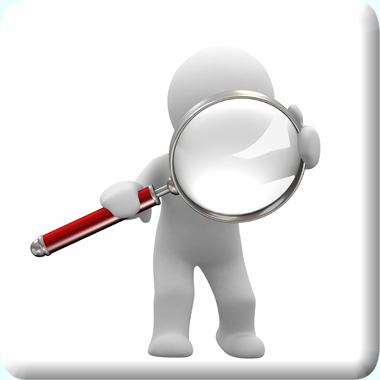Lesson 3: Disability Identification and Categorization
Attention

Without some way to categorize individuals with disabilities it would be very difficult to decide how to help them. Disability is a term used to describe an individual who has a medically determined condition that reduces the individuals function. The definition of disability under Section 504 states that disability includes any person who (a) has a physical or mental impairment that substantially limits one or more major life activities, (b) has a record of such an impairment, or (c) is regarded as having such an impairment. Major life activities include walking, siing, hering, speaking, breathing, learning, working, caring for oneself, and performing manual tasks.
Learning Outcomes
Upon completion of this lesson's material, students will be able to:
- Identify specific research and reference tools where psychiatric disability is classified, measured, and described
- Describe the stigma of mental illness and learn strategies for combating this stigma
- Identify the Employment section (Title I) of the Americans with Disabilities act
Teaching
Mental disorders are sometimes referred to as hidden disabilities because there is not always an observable disability such as an inability to walk, or blindness or other physical disabilities. This course is for Mental Health Rehabilitation Technicians working in the community; however, many times consumers will have more than one diagnosis in combination with their mental health diagnosis. Finding information about these disabilities and their impact on function and access to employment is important to providing case management and other services in the community.
Click HERE to review the article listed below (you will need to log into EBSCO to view this article)
Ben-Zeev, D., Young, M.A., & Corrigan, P.W. (2010). DSM-V and the stigma of mental illness. Journal of Mental Health. 19(4). 318-327.
Click HERE to reivew a great website about Hidden Disabilities.
Review and bookmark the following links about the American with Disabilities Act
http://public.findlaw.com/civil-rights/disability-discrimination/ada-overview.html
and, the DSM IV http://allpsych.com/disorders/dsm.html
Click HERE to review The Same, but Different? an article by Goldman on the Disability Discrimintion Act of 1995. You will need to log into EBSCO to review this article.
It is very important to understand that diagnosis of a psychiatric disability describes a category of patterns of observable behavior. Individuals are not their disability. Physical disabilities are also observable but in many cases have measurable medical evidence.
Specific diagnosis for individuals with psychiatric disorders is done only by professionals who have studied this process extensively and who are licensed to diagnose. However your role as a community rehabilitation provider is to understand the labels and help the consumer adapt to the systems they are working in such as activities of daily living, work adjustment training, one on one teaching, case management and communication. The DSM-5 is a reference tool that you need to be familiar with. We will be referencing this book often as we work our way through the course.
These Diagnostic labels are assigned only by credentialed professionals to provide a common ground for treatment discussion.
DSM
If you have not heard of it before, the DSM is the Diagnostic and Statistical Manual of Mental Health Disorders and is used to categorize all sorts of mental disorders and mental illnesses.
The current edition is DSM-5 which was published in Fall 2013.
Please follow this link for a document that outlines the major changes that have occurred from DSM-IV to DSM-5
http://www.kvccdocs.com/KVCC/2013-Fall/MHT226-OLA/content/L-03/DSM-Changes.pdf
Assessment
Lesson 3 Quiz
Answer the following questions:
1. List two of the medical diagnosis' sometimes referred to as hidden disabilities.
2. What may be the significance for a client between having a hidden disability vs. a non-hidden disability?
3. What is the societal view of individuals with psychiatric disabilities in the workplace? Support your comments with evidence from the reading or other sources.
4. Summarize the description of the Employment Section (Title I) of the Americans with Disabilities Act.
Lesson 3 Discussion
Review the documents which are made available in this weeks lesson plan as it relates to the changes that have been made in DSM 5. Discuss these changes in general and then speculate how they may impact vocational services.